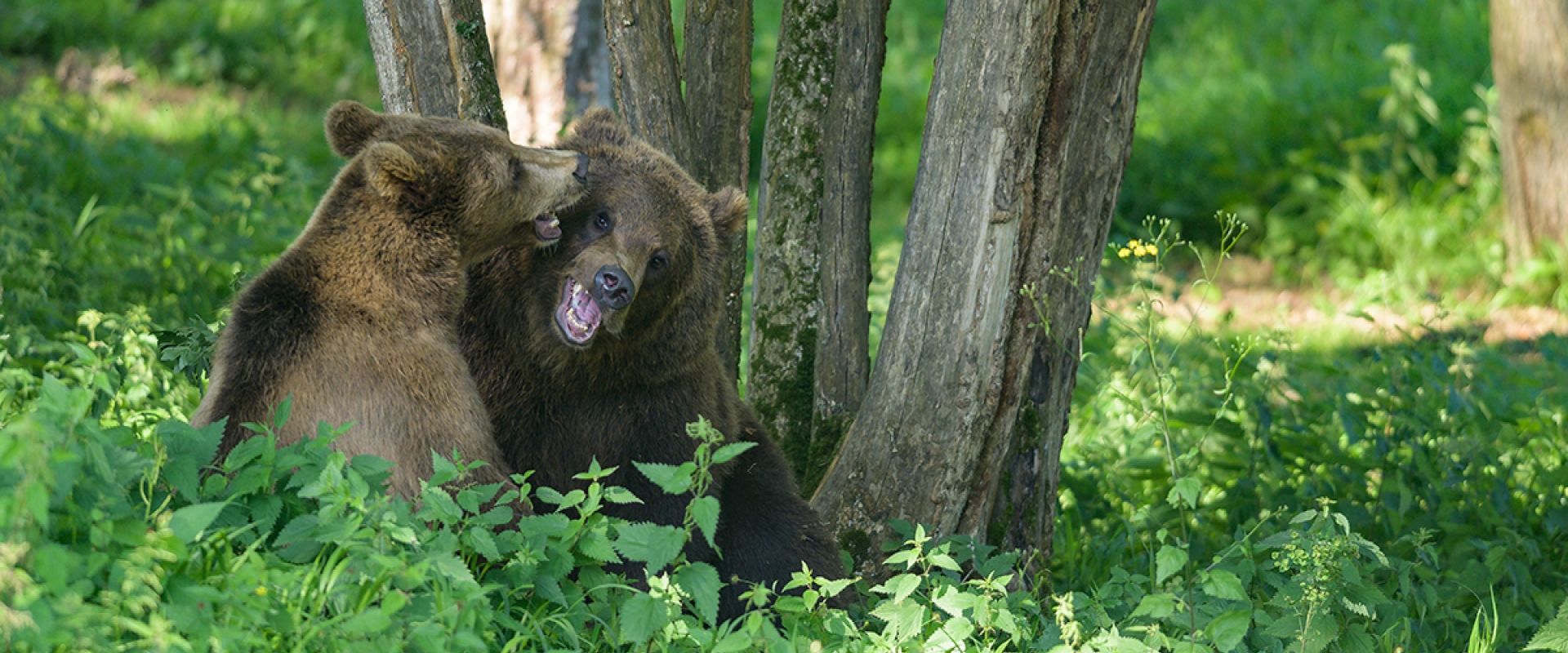Let's discover Bear Hill...
1 July 2019

That's it: the three young bears, Björn, Olof, and Jojo, have been released onto the new Bear Hill... a true little paradise for them, where they spend their days exploring!
A space of nearly 2 hectares dedicated to the brown bear...
After exploring the majestic pine forests of the Far North, Etienne Brunelle, the Wildlife Park Manager, dreamed of recreating these dramatic landscapes within the Wildlife Park and seeing the brown bears thrive there. The result: a space of nearly 2 hectares with rocky areas, areas carpeted with edible vegetation, a water pond, and pine forests... the largest project undertaken in the Wildlife Park since its opening in 1970!
Björn, Olof, and Jojo: already firm friends!
Three weeks ago, the Park welcomed three young one-and-a-half-year-old bears from zoos in Denmark and Sweden: Björn, Olof, and Jojo! The three young males recently met for the very first time, and they are already getting along wonderfully! They spend their days exploring their new home - happily playing together, climbing trees and rocks, and splashing around in the pond.
New, state-of-the-art facilities
Above Bear Hill, a dedicated area was built been. It will be used to house the bears at night but also to accommodate a veterinary room, a quarantine area, and technical buildings for the bison. This project was carefully planned over several months because, alongside the creation of a new space for the bears, the Park was also eager to modernise their bison facilities. Improving their infrastructure was a priority, ensuring optimal conditions for the species, which is involved in numerous conservation and reintroduction programmes.
A protected species
The European brown bear is not considered an endangered species, but is nonetheless a protected species. There are approximately 17.000 brown bears across Europe, found in regions such as the Pyrenees, the Abruzzo and Trentino areas in Italy, the Dinaric Alps in Slovenia, and the Carpathians, including Romania, Slovakia, Poland, and Ukraine. The Carpathian mountain range is home to half of Europe’s brown bear population.
Coexistence between humans and bears is not always easy, as they often share the same territory, leading to overlapping activities. However, there are many examples of successful coexistence.